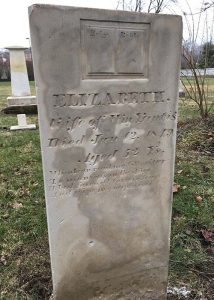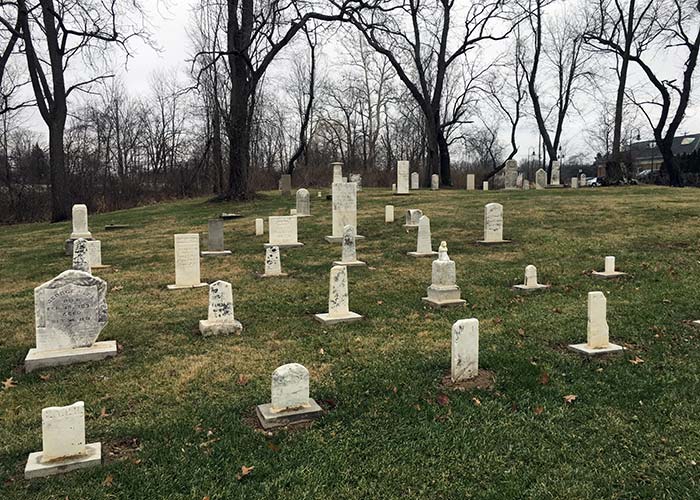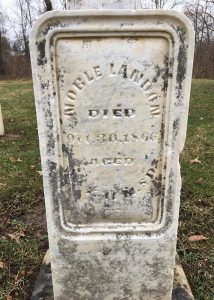New Albany Cemetery Restoration Almost Complete
Under the supervision of its Cemetery Restoration Advisory Board, the City of New Albany has almost completed restoration of the New Albany Cemetery (1854-1881). Located behind Village Hall, the cemetery is the burial place of Noble Landon and William Yantis, the Founders of New Albany, and their families, as well as many of New Albany’s earliest residents.
By the 1970s, the New Albany Cemetery had become neglected and was in poor condition. A frustrated neighbor bulldozed all the monuments and pushed the stones into the Rose Run stream to create a pond. There were no existing records of the people who had been interred in the cemetery or the location of their gravesites. In 1979, some members of the New Albany-Plain Township Historical Society pulled the stones from the stream and placed them around trees in the cemetery area.
After extensive research and geographical imaging, New Albany’s Cemetery Restoration Advisory Board determined that approximately 134 people were originally interred in the New Albany Cemetery between 1854 and 1881. Eleven of those people are believed to have been buried elsewhere and then re-interred to the New Albany Cemetery in 1854 when it was created. The earliest headstone in the cemetery dates to 1837.
After nearby Maplewood Cemetery opened in the 1880s, at least 19 people were re-interred from the New Albany Cemetery to Maplewood. Another 50 people were re-interred from historic cemeteries in the area to Maplewood around the same time, but Maplewood’s records do not indicate their original burial location.
Between 2015 and 2018, and with the assistance of Ohio Valley Archeology, Inc., the Cemetery Restoration Advisory Board identified between 63 and 83 existing burial sites in the cemetery. It also identified the names of 68 people believed to be buried there based on burial monuments and other historical references.
Although the existing monuments have been cleaned, restored and reset in the cemetery, twelve additional monuments must be reproduced because the originals were not restorable or were missing. The City hopes to complete this work in the near future.




